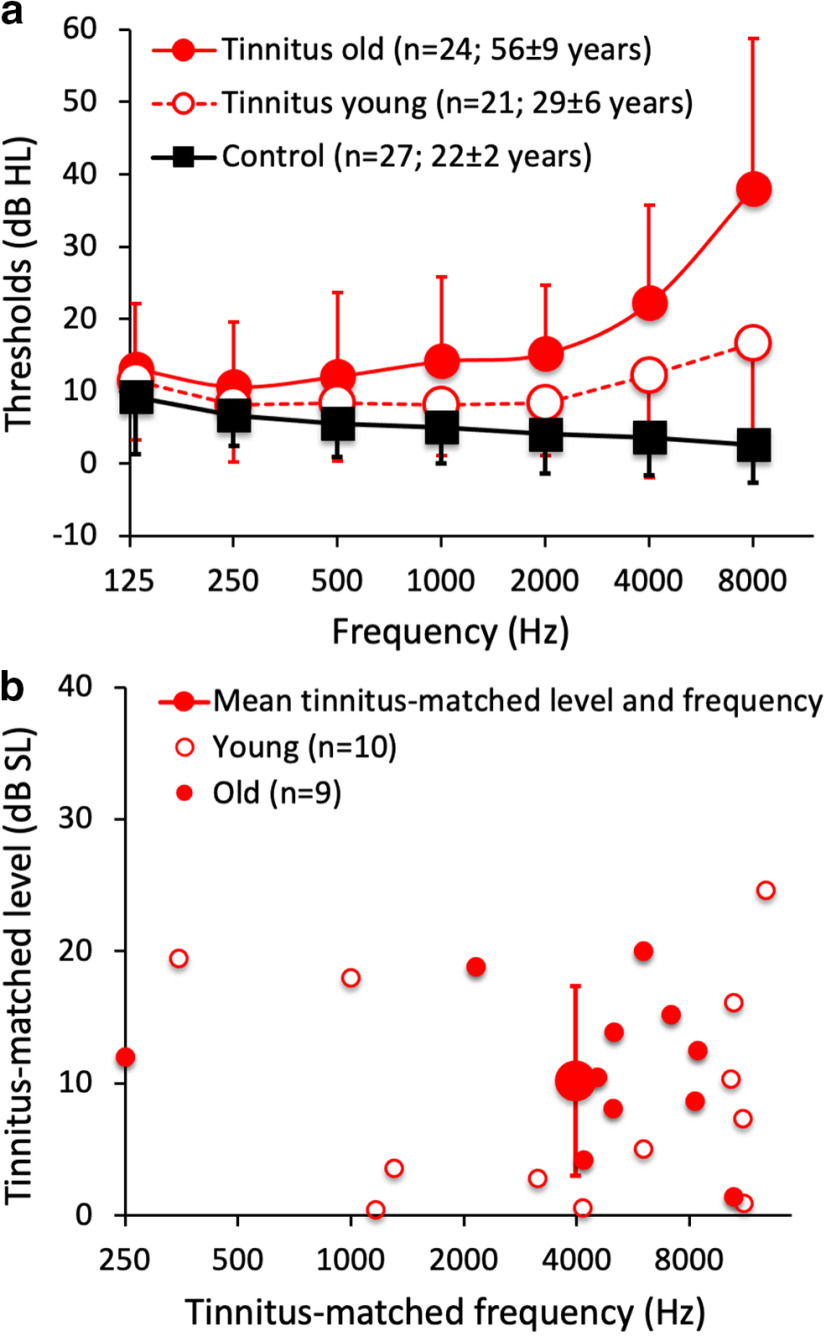Figure 1.
a, Pure-tone audiograms showing hearing thresholds as a function of test-tone frequency for 27 young, normal-hearing control subjects (solid black squares), 21 young tinnitus subjects (open red circles), and 24 old tinnitus subjects (solid red circles). Error bars show ±1 SD of the mean. b, Tinnitus matching levels (y-axis) and frequencies (x-axis) for 19 tinnitus subjects who participated in gap detection, frequency, and intensity discrimination experiments. The mean tinnitus matching level and frequency are represented by the large solid circle with error bars (±1 SD). The 19 subjects included 9 old subjects (small solid red circles) and 10 young subjects (small open red circles). There was no significant difference in tinnitus level between the old and young subjects (11.4 ± 5.4 vs 9.1 ± 8.4 dB SL; two-tailed, two-sample t test, p = 0.46).

